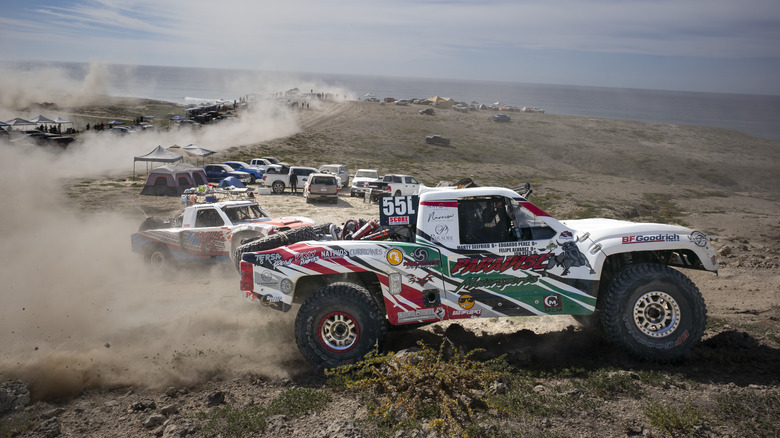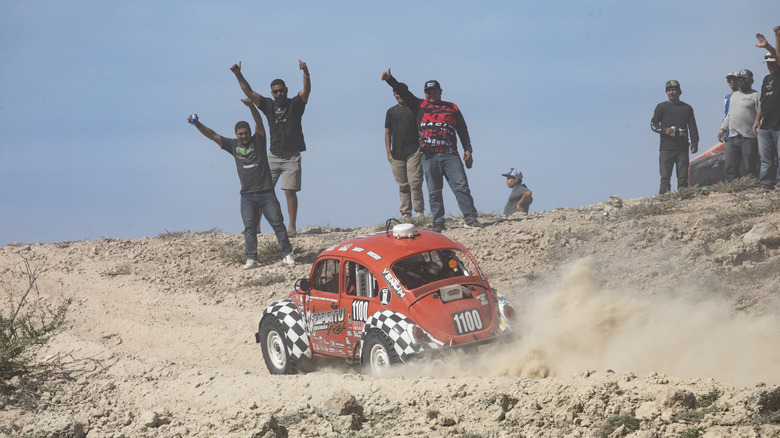Why The Baja 1000 Is Considered One Of The Riskiest Races Of All Time
Car races are never exactly safe, what with thousands of pounds of metal hurtling around sharp corners a dozen feet from fans. But consistent standards are established with the roads, vehicles, and setting that generally help ensure a default expectation of measured risk. What distinguishes the Baja 1000 in Mexico is that those standards feel more like suggestions for both the drivers and those running the race. It's probably why half the teams that enter usually don't end up finishing, and why it's one of the more exciting races out there.
The risk begins with the terrain. The Baja 1000 is an off-road race held on the Baja California Peninsula in the small town of Ensenada, and it generally traverses around 1,000 miles day and night through the desolate and dusty Baja desert. These aren't exactly flat desert plains populated by the occasional cactus, but steep climbs and sharp rocky drops on a bumpy road around the peninsula. The route has numerous obstacles, including boulders, dunes, river crossings, cacti forests, and the occasional herd of cattle.
It's all managed in an environment saturated with brutal heat, as well as an omnipresent silt-like sand, which is rough to drive through for both the driver and the vehicle.
All sorts of vehicles race, but many don't finish
Part of what creates the unsupervised feeling around the Baja 1000 is the cornucopia of vehicles able to enter. They can vary wildly in size and speed, as long as they meet basic safety requirements. The vehicles include stock cars, dirt bikes, dune buggies, four-wheel-drive vehicles, motorcycles, and side-by-sides, just to name a few. There are even vehicle types specifically designed for this kind of race that you're unlikely to see anywhere else. Trophy trucks are totally not street legal, but these high-speed vehicles are designed to handle the rough desert course. Baja Bugs are modified off-road Volkswagen Beetles with raised suspensions, and Truggies combine trucks and buggies into a single strange-looking high-performance vehicle.
Collectively, they create a scene like something out of "Mad Max," and drivers must quickly adjust to the varying speeds and sizes of other vehicles while trying to pass them without crashing. It's all no easy task, and the results show it, which is why it's considered an accomplishment just to finish the race, no matter in what position. In 2020, 185 teams began the race and 111 finished.
This is also one of the rare races where crashes aren't merely a threat to onlookers, but where they may be caused by them. Though rare, sometimes spectators will booby trap a part of the track — in the form of holes, debris, or purposely flooded areas — in order to create even more chaos. Despite this and every other obstacle, drivers keep returning, hoping to grab a bit of glory, even if it feels insane.

